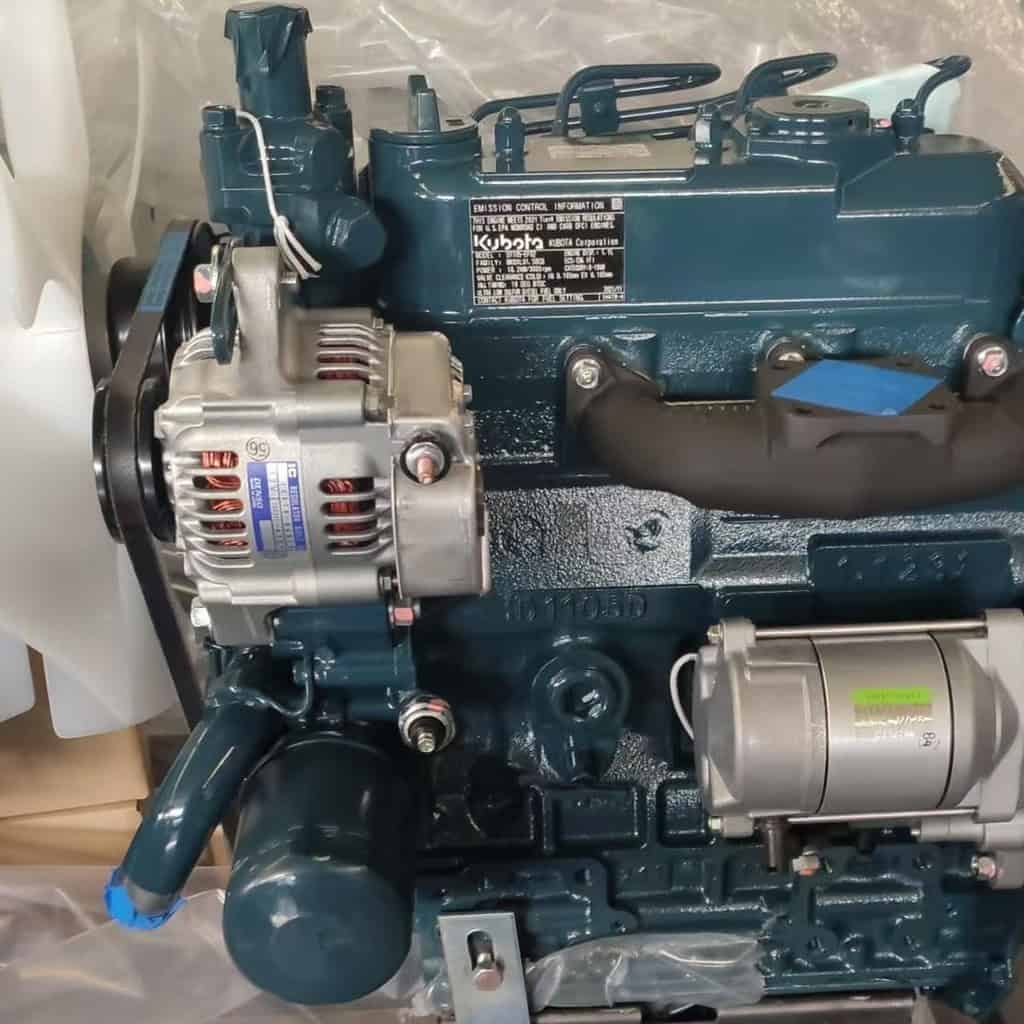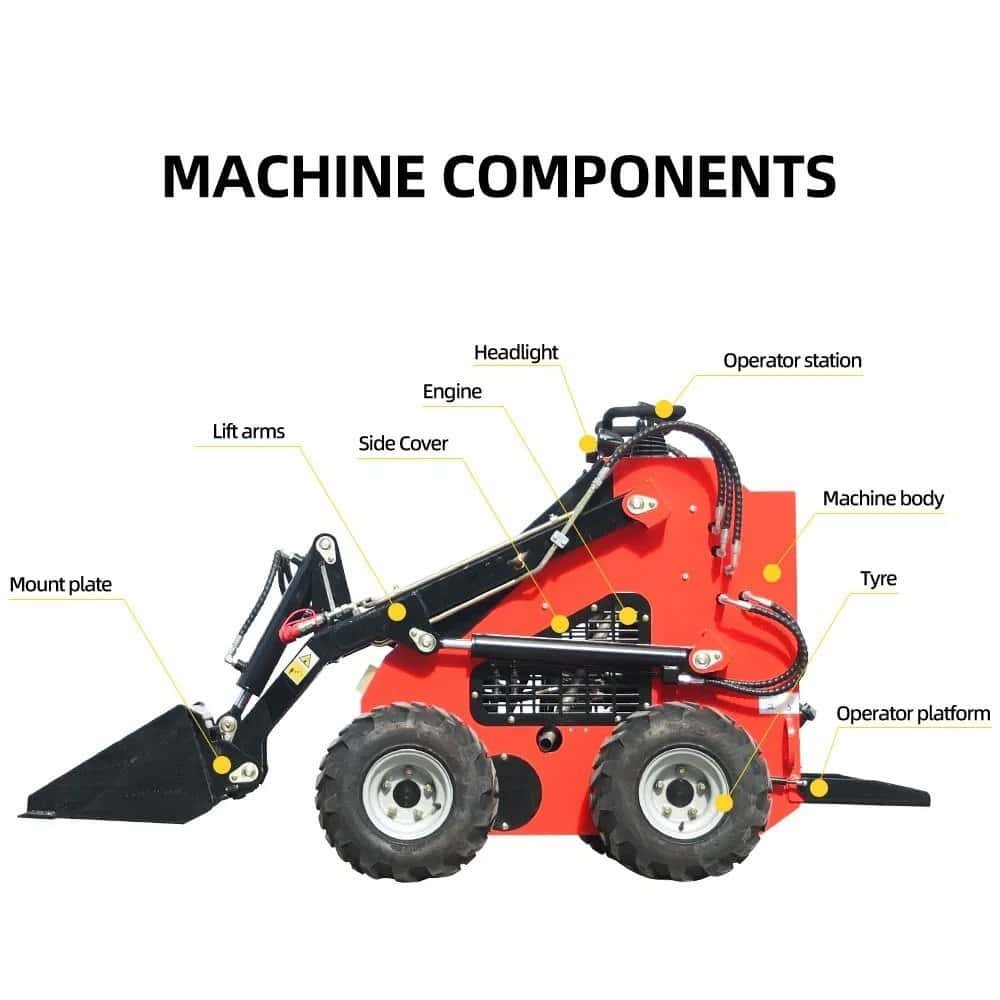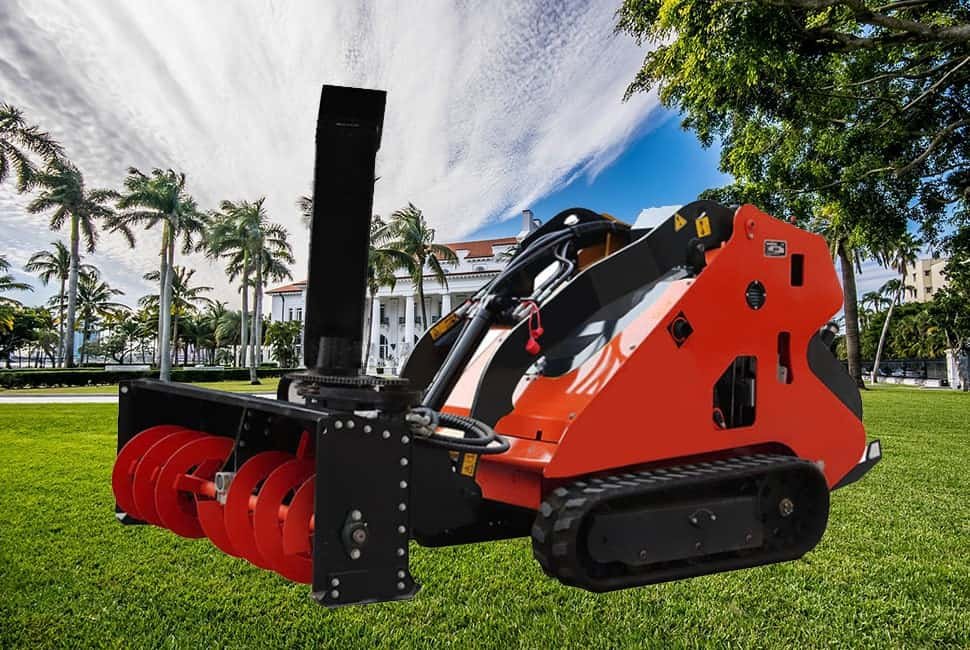Skid steers are powerful machines used in construction, landscaping, and agriculture. However, to make the most of your skid steer loader, it’s crucial to understand its main components. Knowing how each part works ensures better performance, maintenance, and overall machine longevity.
The main skid steer components include the engine, wheels or tracks, hydraulic system, lift arms, and attachments. Each part plays a vital role in the machine’s operation and versatility. Understanding these components can help you optimize performance and make informed decisions when purchasing or maintaining your skid steer.
Now, let’s take a closer look at the main components that make a skid steer loader one of the most versatile machines on the market.
What is a Skid Steer and How Does It Work?
A skid steer loader is a versatile and compact powerhouse in the world of construction machinery, renowned for its exceptional agility and ability to navigate through tight quarters with ease. Unlike conventional machinery, skid steers boast a distinctive drive system that facilitates sharp turns and precise movements in confined spaces, making them an indispensable tool for a multitude of tasks. Gaining a deeper understanding of their operational mechanics is crucial for maximizing their efficiency and effectiveness on the job.
These nimble machines, available with either wheels or tracks, are characterized by their innovative drive system, which enables each side to move independently. This innovative design not only enhances maneuverability but also allows for unparalleled precision, particularly in spaces where room to maneuver is limited.
Skid steers have earned their place in a variety of industries, including construction, landscaping, and agriculture, thanks to their adaptability and versatility. The independent motion of the wheels or tracks empowers operators to execute pinpoint turns and effortlessly traverse tight spots. Moreover, these machines can be equipped with an assortment of attachments, such as buckets for digging, forks for lifting, and augers for drilling, thereby multiplying their capabilities and making them a Swiss Army knife of the construction site. This adaptability ensures that skid steers can tackle a wide array of challenges, from site preparation to material handling, with ease and efficiency.
Main Skid Steer Components
To gain a comprehensive grasp of the skid steer’s inner workings, it’s imperative to delve into its fundamental components, which together form the backbone of this multifaceted machine. These integral parts are what make the skid steer one of the most adaptable pieces of equipment on any construction site.
The core components of a skid steer are the engine, wheels or tracks, hydraulic system, lift arms, and attachments. Each of these elements plays a pivotal role in the machine’s ability to perform an extensive array of tasks with remarkable dexterity.
- Engine: The engine is the lifeblood of the skid steer, providing the necessary power to drive the machine. It typically varies in power output from 25 to 90 horsepower, depending on the specific model. This crucial component dictates the machine’s lifting capacity and operational speed, making it a key factor in the skid steer’s overall performance.

- Wheels/Tracks: Skid steers are equipped with either wheels or tracks, each offering distinct advantages. Wheels provide swift movement and agile handling on solid surfaces, while tracks deliver superior traction and stability on soft or uneven terrain, ensuring the machine’s grip and balance in challenging conditions.
- Гидравлическая система: The hydraulic system is the nerve center that powers the lift arms and manages the operation of various attachments. It harnesses the force of pressurized fluid to create motion, offering operators precise control over the machine’s movements and functions.
- Lift Arms: The lift arms are indispensable for the skid steer’s ability to raise and lower attachments such as buckets or forks. They exert the necessary force to handle heavy loads and execute lifting tasks with confidence.

- Вложения: One of the hallmarks of the skid steer is its compatibility with a broad spectrum of attachments. These can be swiftly interchanged to accommodate a variety of tasks, from excavation and material handling to snow removal, showcasing the machine’s unparalleled adaptability and utility in diverse work environments.
The Hydraulic System of a Skid Steer
The hydraulic system stands as a cornerstone of the skid steer’s functionality, playing a pivotal role in empowering the lift arms that enable the machine to execute a diverse array of tasks, from lifting and digging to material handling. Gaining a deep understanding of this system is paramount for unlocking the full potential of your skid steer and ensuring it operates at peak efficiency.
The hydraulic system harnesses the power of fluid under pressure to actuate the skid steer’s lift arms and manage the various attachments. A well-maintained hydraulic system is the linchpin of smooth and efficient operations, allowing the machine to tackle a broad spectrum of tasks with finesse and precision.

This system is composed of several critical components that work in harmony to ensure the skid steer’s performance. The pump is the workhorse, generating the requisite pressure to propel the fluid through the system. The valves act as traffic controllers, meticulously managing the fluid’s journey to specific components. The cylinders and hoses serve as the conduits, directing the pressure to the lift arms and attachments with precision.
Regular upkeep of the hydraulic system is not just recommended but essential for maintaining the skid steer’s optimal performance. This includes vigilant checks for any leaks that could compromise the system’s integrity and ensuring that the fluid levels are meticulously maintained. By paying close attention to the health of the hydraulic system, you can extend the life of your skid steer, reduce downtime, and keep your operations running smoothly and efficiently.
Skid Steer Attachments: How They Enhance Functionality
One of the standout features of a skid steer is its ability to use various attachments, turning it into a highly adaptable machine. From lifting to digging, skid steer attachments enhance the machine’s functionality and make it suitable for a wide range of tasks.
Skid steer attachments are powered by the machine’s hydraulic system. They can be swapped out easily, allowing the skid steer to perform a variety of tasks like digging, lifting, grading, and material handling.

Some common attachments include:
- Ведра: Ideal for digging, lifting, and moving dirt, gravel, or debris.
- Форк: Used for lifting and moving pallets or other materials.
- Шнеки: Perfect for drilling holes in the ground for fence posts, sign posts, or foundation work.
- Plows: Used for clearing snow or other debris from roads or construction sites.
Choosing the right attachment for the job is crucial. For example, using the wrong attachment can damage both the machine and the attachment, reducing its effectiveness.
Skid Steer Tires vs. Tracks: Which is Better?
Skid steers can be equipped with either tires or tracks, and each option has its advantages and disadvantages. Deciding which one to choose depends on the job site conditions and the type of work you’re performing.
- Tires: Skid steer tires are more common and offer excellent speed on solid surfaces, making them ideal for hard, dry ground. They are also less expensive to replace than tracks and require less maintenance.
- Tracks: Tracks are ideal for soft, muddy, or uneven surfaces because they distribute the machine’s weight more evenly, providing better traction and stability. They are commonly used in wet conditions or on construction sites with unstable ground.
The decision to use tires or tracks will largely depend on the terrain and the type of tasks you’ll be performing with the skid steer.
Skid Steer Maintenance: Keeping Your Components in Top Shape
Regular maintenance is vital to keep your skid steer operating at peak efficiency. Proper care of the components will prolong the life of the machine and prevent costly repairs.
Routine maintenance involves checking and servicing key components like the engine, hydraulic system, and tires or tracks. Regular oil changes, fluid checks, and part replacements are necessary to keep your skid steer in optimal working condition.
- Гидравлическая система: Regularly check the fluid levels and inspect for leaks. If any leaks are detected, repair them immediately to avoid further damage.
- Engine Maintenance: Clean the engine and air filters regularly, and ensure the engine oil is changed as recommended by the manufacturer.
- Tires/Tracks: Inspect the tread wear on tires or tracks, and replace them when necessary. Properly inflated tires improve efficiency, while tracks should be checked for wear and tear.
Краткое содержание
Understanding the skid steer components allows you to operate and maintain the machine effectively. By focusing on key parts like the engine, hydraulic system, lift arms, and attachments, you ensure that your skid steer performs optimally for years to come.


